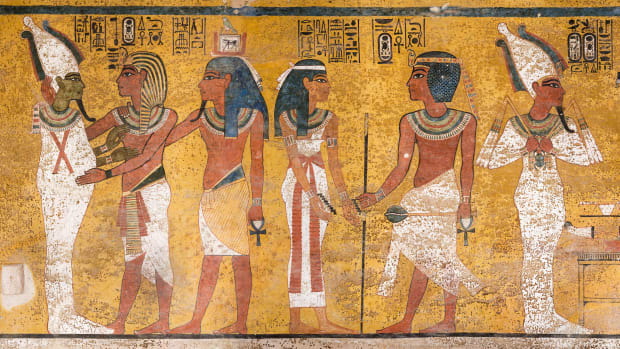Ancient Egyptian History and Culture

You might be interested in Ancient Egyptian culture. Learn more about their gods and religious beliefs. Learn more about their kings, cults and other details. The ancient Egyptians were very religious and followed a strict code.
Ancient Egyptians
Ancient Egyptians were a people with a rich history. They farmed fertile soil for crops and lived near the Nile River. Their civilization was marked by prosperity and peace, and their pharaohs were at the center of government. There were few major threats from the outside and many successful military operations. The king’s wealth decreased as more people came to the pyramid-building site and the population grew. His absolute power was also reduced by the increasing influence of the priesthood and Ra priesthood.
Stone masons were among the skilled professionals required to build the pyramids. These specialists were also supported by peasants. Royal officials required that all households provide enough workers to support the pyramid projects. But, wealthy Egyptians can pay for replacement workers for certain jobs. The Ancient Egyptians are also well-known for their ability to build boats. The pyramids were used to bury mummies and they were covered with resin.
Their kings
The kingship of the Ancient Egyptians was a hallmark of their culture. Old Kingdom kings were regarded as incarnate gods and built impressive pyramids to symbolize their absolute power. The Middle Kingdom saw kings as divinely appointed representatives for the gods of earth. Their role was to lead their people. They were forbidden from entering the celestial realm after they had died.
The fourth dynasty witnessed Egypt’s prosperity and peace in the era that followed. The country had a stable central government because the kings held absolute power. It also enjoyed several successful military campaigns in neighbouring countries, which helped to increase its economic prosperity. The king’s wealth and power declined over time as pyramid building consumed him. His absolute power was being threatened by the increasing influence of the priesthood and nobility.
Their religion
Prehistory is the origin of the religion of ancient Egyptians. It lasted for over three thousand years. The gods evolved over time and the worship of them changed. During the New Kingdom, and Late Periods, the sun god Ra was the most important god. Other gods were gradually replaced by one god. Despite the religious changes, the Egyptians left behind a wealth of mythology and writings that influenced both modern and ancient cultures.
Some interesting information about Ankha
The Egyptians believed the gods existed in all of the cosmos, and that they were part of it. Egyptians believed that afterlife was the same as the present life and that they would require possessions and bodies to enjoy a fulfilling life after death.
Their cults
Semi-divine entities, the Egyptian pharaohs were partly sons and earthly manifestations of the god Horus. Cults were created for both deceased and living pharaohs. Offerings were made to them and sacred food was brought to their temples.
The New Kingdom saw the rise of the cult “living pharaoh” which was centered on the king’s divine birth. According to legend, King Amenhotep III was born from the seed of Amun. This cult could have been created to legitimize King Amenhotep III’s claim to throne.
Their art
Egyptian art was a traditional style until the Amarna period. Figures were depicted in a profile, with the heads and bodies facing forward. They were also symmetrical with two feet on each side and two feet on the other. They used horizontal and vertical lines as guides. These lines were often ruled or made of strings dipped with pigment. Fixed canons were used to determine the proportions of human figures.
Ancient Egyptian artists used a wide range of materials. These materials included locally-sourced as well as imported materials. Lapis lazuli, a key material in the creation predynastic figurines, was used. This indicates that trade routes existed long before this time. Many native stones were also used by artists to create statues and other artifacts. These include soft limestone, sandstone and calcite from the Nile cliffs.
Their economy
Egypt’s economic growth has been marked by a complicated relationship between politics and economics. Egypt’s dynamic decade of globalization relied heavily on an economic mix of unique tourist sites, Gulf worker remittances, and trade through Suez Canal to generate foreign currency and revenue. The combination of economic activity resulted also in large-scale land redistribution and progressive income taxation.
Egypt’s first two millennia were dominated by agriculture. However, the Nile was the mainstay of Egypt’s economy. It flooded the land along its banks and gave rise to fertile silt. The Nile was also able to transport commodities across the country. While most of the land was cultivable by individuals, large estates were controlled and funded by the government. These estates were usually owned by royal officials.
